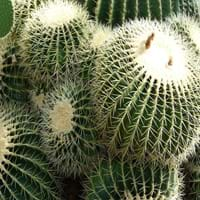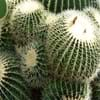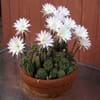Life Span
Perennial
Perennial
Type
Cactus or Succulent
Fruit
Origin
North America, Southwestern United States, Mexico
Mexico, Central America
Types
Echinocactus parryi, Echinocactus texensis
Reinikie, Dade, Pike, Suebelle and Golden
Climate
Number of Varieties
Not Available
Habitat
Desert, Gravels, Sandy areas
Tropical Highlands
USDA Hardiness Zone
9-15
8-11
Sunset Zone
12, 13, 21, 22, 23, 24
H1, H2, 14, 15, 16, 17, 18, 19, 20, 21, 22, 23, 24
Habit
Oval or Rounded
Oval or Rounded
Flower Color
Yellow, Magenta
Light Green, Ivory
Flower Color Modifier
Not Available
Bicolor
Fruit Color
Yellow
Light Yellow, Yellow green, Light Green
Leaf Color in Spring
Not Available
Green, Dark Green
Leaf Color in Summer
Not Available
Green, Dark Green
Leaf Color in Fall
Not Available
Green, Dark Green
Leaf Color in Winter
Not Available
Light Green
Leaf Shape
Succulent
Alternate
Plant Season
Spring, Summer, Fall, Winter
Spring, Summer, Fall, Winter
Sunlight
Full Sun, Partial Sun
Full Sun
Type of Soil
Loam, Sand
Loam, Sand
The pH of Soil
Acidic, Neutral, Alkaline
Acidic, Neutral
Soil Drainage
Well drained
Well drained
Bloom Time
Late Spring, Early Summer, Summer
Winter, Late Winter
Tolerances
Drought, Heat Tolerance, Shade areas
Drought
Where to Plant?
Container, Ground, Pot
Ground
How to Plant?
Seedlings
Budding, Grafting, Seedlings, Vegetative
Plant Maintenance
Low
Medium
Watering Requirements
Average Water Needs, Do Not over Water, Never Over-water, Requires watering in the growing season, Water when top layer of soil becomes dry
Do not water frequently, Needs more water during establishment, Water during dry weather
In Summer
Lots of watering
Lots of watering
In Spring
Moderate
Moderate
In Winter
Average Water
Average Water
Soil pH
Acidic, Neutral, Alkaline
Acidic, Neutral
Soil Type
Loam, Sand
Loam, Sand
Soil Drainage Capacity
Well drained
Well drained
Sun Exposure
Full Sun, Partial Sun
Full Sun
Pruning
Remove damaged leaves, Remove dead leaves, Remove dead or diseased plant parts
Remove damaged leaves, Remove dead branches, Remove dead leaves
Fertilizers
fertilize in summer, Potassium
All-Purpose Liquid Fertilizer
Pests and Diseases
Mealybugs, Spider mites
Red blotch
Plant Tolerance
Drought, Full Sun, Heat Tolerance, Shade areas
Drought
Flowers
Showy
Insignificant
Flower Petal Number
Single
Single
Fragrant Flower
No
Not Available
Foliage Texture
Bold
Medium
Foliage Sheen
Not Available
Matte
Attracts
Insects, Mealybugs, Spider Mites
Birds
Allergy
Skin cuts
drowsiness
Aesthetic Uses
Beautification, Landscape Designing, Showy Purposes
Not Used For Aesthetic Purpose
Beauty Benefits
No Beauty Benefits
Not Available
Environmental Uses
Air purification, Food for insects, Very little waste
Air purification
Medicinal Uses
No Medicinal Use
Anti-carcinogenic effects, Colon Cancer
Part of Plant Used
Whole plant
Fruits, Pulp, Seeds
Other Uses
Decoration Purposes, Showy Purposes, Used as Ornamental plant
Used As Food
Used As Indoor Plant
Yes
No
Used As Outdoor Plant
Yes
Yes
Garden Design
Container, Houseplant, Rock Garden, Wall
Edible, Fruit / Fruit Tree, Shade Trees, Tropical
Botanical Name
ECHINOCACTUS
CASIMIROA edulis
Common Name
Golden barrel cactus, Golden ball
White Sapote
In Hindi
echinocactus
White Sapote
In German
echinocactus
White Sapote
In French
echinocactus
Sapote blanche
In Spanish
echinocactus
White Sapote
In Greek
Echinocactus
White Sapote
In Portuguese
Echinocactus
White Sapote
In Polish
Echinocactus
White Sapote
In Latin
Echinocactus
White Sapote
Phylum
Tracheophyta
Magnoliophyta
Class
Magnoliopsida
Magnoliopsida
Order
Caryophyllales
Sapindales
Family
Cactaceae
Rutaceae
Genus
Echinocactus
Casimiroa
Clade
Angiosperms, Core eudicots, Eudicots
Angiosperms, Eudicots, Rosids
Tribe
Cacteae
Not Available
Subfamily
Cactoideae
Not Applicable
Season and Care of Echinocactus and White Sapote
Season and care of Echinocactus and White Sapote is important to know. While considering everything about Echinocactus and White Sapote Care, growing season is an essential factor. Echinocactus season is Spring, Summer, Fall and Winter and White Sapote season is Spring, Summer, Fall and Winter. The type of soil for Echinocactus is Loam, Sand and for White Sapote is Loam, Sand while the PH of soil for Echinocactus is Acidic, Neutral, Alkaline and for White Sapote is Acidic, Neutral.
Echinocactus and White Sapote Physical Information
Echinocactus and White Sapote physical information is very important for comparison. Echinocactus height is 30.00 cm and width 30.00 cm whereas White Sapote height is 610.00 cm and width 760.00 cm. The color specification of Echinocactus and White Sapote are as follows:
Echinocactus flower color: Yellow and Magenta
Echinocactus leaf color: Not Available
White Sapote flower color: Light Green and Ivory
- White Sapote leaf color: Green and Dark Green
Care of Echinocactus and White Sapote
Care of Echinocactus and White Sapote include pruning, fertilizers, watering etc. Echinocactus pruning is done Remove damaged leaves, Remove dead leaves and Remove dead or diseased plant parts and White Sapote pruning is done Remove damaged leaves, Remove dead branches and Remove dead leaves. In summer Echinocactus needs Lots of watering and in winter, it needs Average Water. Whereas, in summer White Sapote needs Lots of watering and in winter, it needs Average Water.





